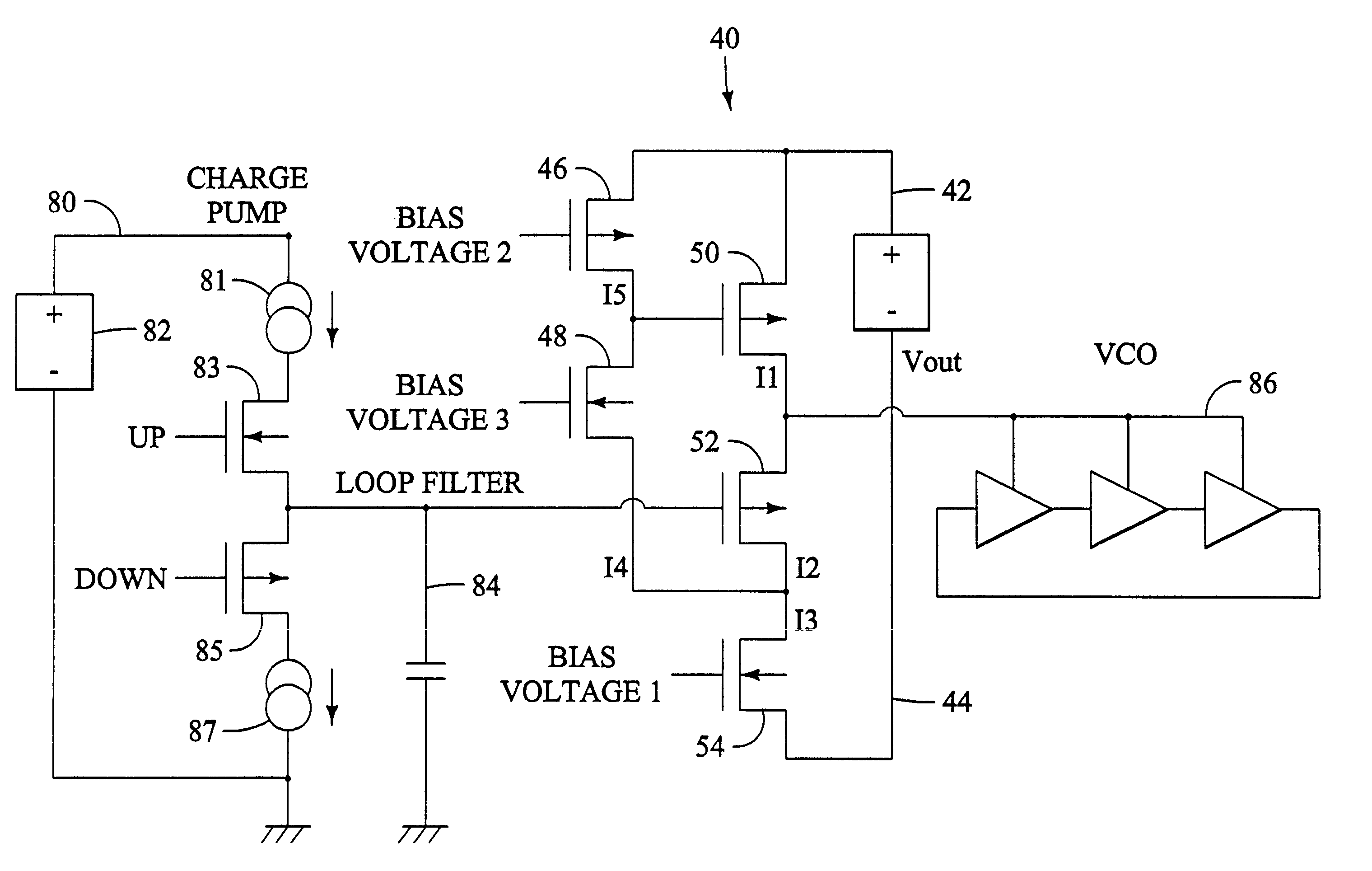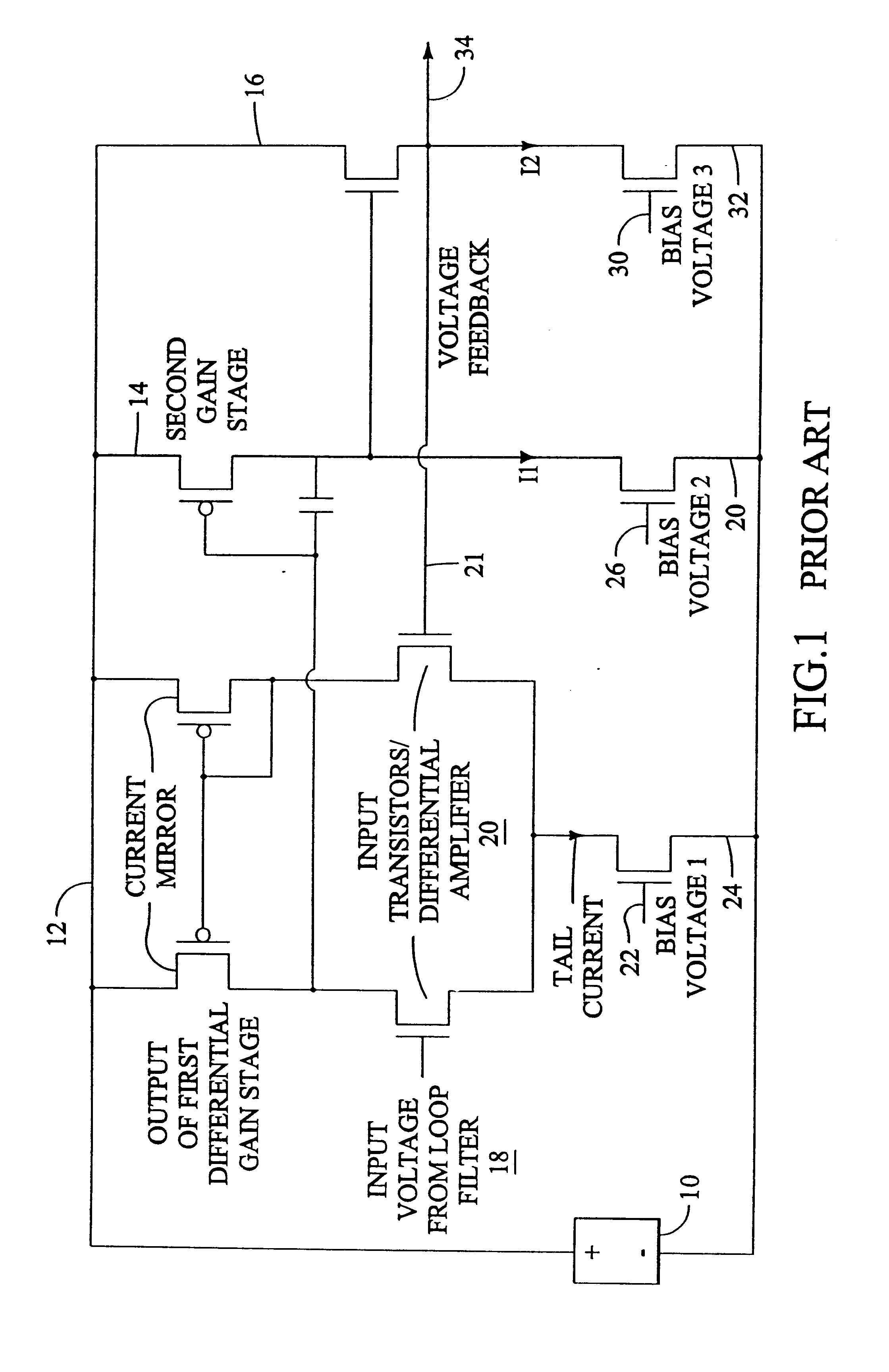Efficient current feedback buffer
a current feedback buffer and current current technology, applied in pulse generators, pulse techniques, instruments, etc., can solve the problems of deprived circuits of a part of the limited voltage available and limited minimum input voltage, and achieve greater control of operation and voltage ranges
- Summary
- Abstract
- Description
- Claims
- Application Information
AI Technical Summary
Benefits of technology
Problems solved by technology
Method used
Image
Examples
Embodiment Construction
In the discussion below, transistors are described as CMOS transistors, and in particular as p-channel MOS (PMOS) or n-channel MOS (NMOS) transistors. Those skilled in the art will recognize that the terms p-channel and n-channel might more accurately describe the transistors discussed herein, since these transistors are typically not manufactured by depositing metallic elements, except possibly for external connections. Rather, source and gate regions are doped to either p-type or n-type, indicating whether the channel between source and drain conducts via depletion mode (holes) or enhancement mode (electrons). Nevertheless, the terms PMOS and NMOS are more-commonly used, and are used herein to mean those transistors manufactured by CMOS processes.
FIG. 2 depicts a first embodiment of a CMOS power supply 40 having current feedback. The power supply 40 includes first, third and fourth transistors 46, 50 and 52, PMOS transistors, and second and fifth transistors 48 and 54, NMOS transi...
PUM
 Login to View More
Login to View More Abstract
Description
Claims
Application Information
 Login to View More
Login to View More - R&D
- Intellectual Property
- Life Sciences
- Materials
- Tech Scout
- Unparalleled Data Quality
- Higher Quality Content
- 60% Fewer Hallucinations
Browse by: Latest US Patents, China's latest patents, Technical Efficacy Thesaurus, Application Domain, Technology Topic, Popular Technical Reports.
© 2025 PatSnap. All rights reserved.Legal|Privacy policy|Modern Slavery Act Transparency Statement|Sitemap|About US| Contact US: help@patsnap.com



